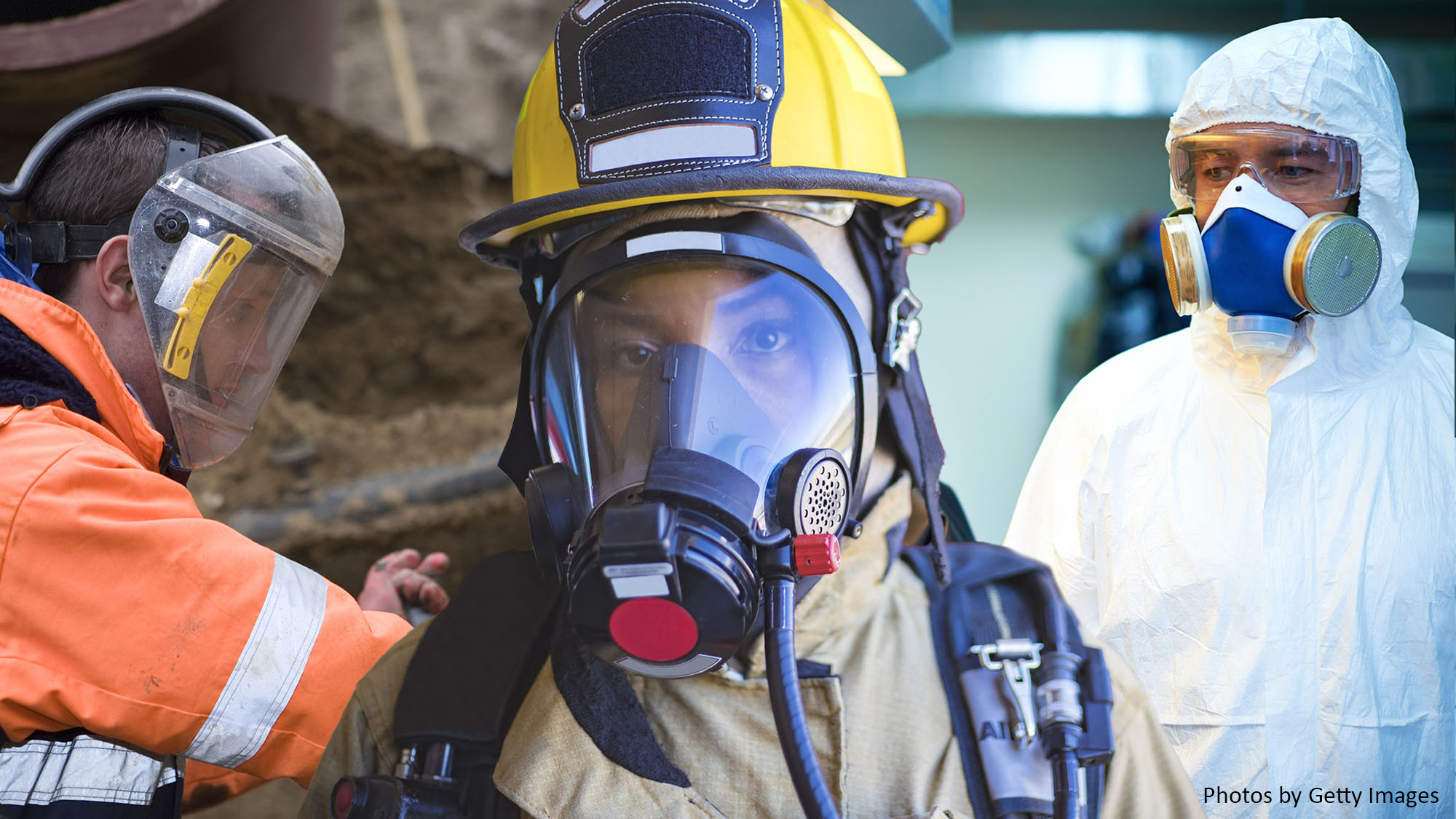Key points
- The Personal Protective Technology (PPT) Program prevents work-related injury, illness, and death by advancing the state of knowledge and application of PPT.
- PPT supports more than 20 million U.S. workers who rely on this equipment (e.g., respirators, coveralls, gowns, gloves, eye protection, etc) to keep them safe from workplace hazards.
Overview

The PPT Program is responsible for testing and approving new respirators before they enter the market. This ensures that NIOSH-Approved respirators meet the minimum construction, performance, and respiratory protection standards to keep users safe. The Program conducts post-market activities to ensure devices continue to perform to the applicable standard. Additionally, the Program evaluates and improves equipment worn by workers by conducting research on new technologies, emerging hazards, and test methods. Based on the research, the PPT Program is able to develop and implement science-based national guidance and evidence-based recommended practices for respiratory and other personal protective technologies. The Program performs outreach to disseminate guidance and tools to help employers and employees use PPT as effectively as possible.
Research priorities
The PPT program has selected research priorities on the basis of burden, need, and impact and collaborated with other NIOSH research programs to write the research goals in the NIOSH Strategic Plan for FYs 2019-2026. Priority areas include (but are not limited to):
- Reducing cancer and adverse reproductive outcomes, pathogen transmission, and work-related asthma among healthcare and social assistance workers.
- Reducing lung cancer and other respiratory diseases caused by hazardous airborne contaminants among mining workers.
- Preventing exposures to known or suspected carcinogens among fire fighters
- Reducing exposure to particulates and heat stress suspected of contributing to adverse cardiovascular outcomes in firefighters and other first responders.
- Prevent transmission of infectious disease among public safety workers.
Resources
See the Directory of Personal Protective Equipment for more information and useful resources. Especially important resources include:
- Certified Equipment List - A searchable database of NIOSH Approved respirators
- Counterfeit Respirators - Alerts about counterfeit respirators or those misrepresenting NIOSH approval on the market
- Elastomeric Half Mask Respirator Resources - A type of air-purifying respirator that allows for repeated cleaning, disinfection, storage, and reuse
- PPE CASE Reports - Findings from post-market personal protective equipment tests, evaluations, and investigations
The NIOSH Science Blog provides an opportunity to learn about various workplace safety and health topics and exchange ideas with leading researchers from NIOSH. Check out NIOSH Science Blogs about personal protective equipment and respirators.
Attribution Statement: NIOSH Approved is a certification mark of the U.S. Department of Health and Human Services (HHS) registered in the United States and several international jurisdictions.
